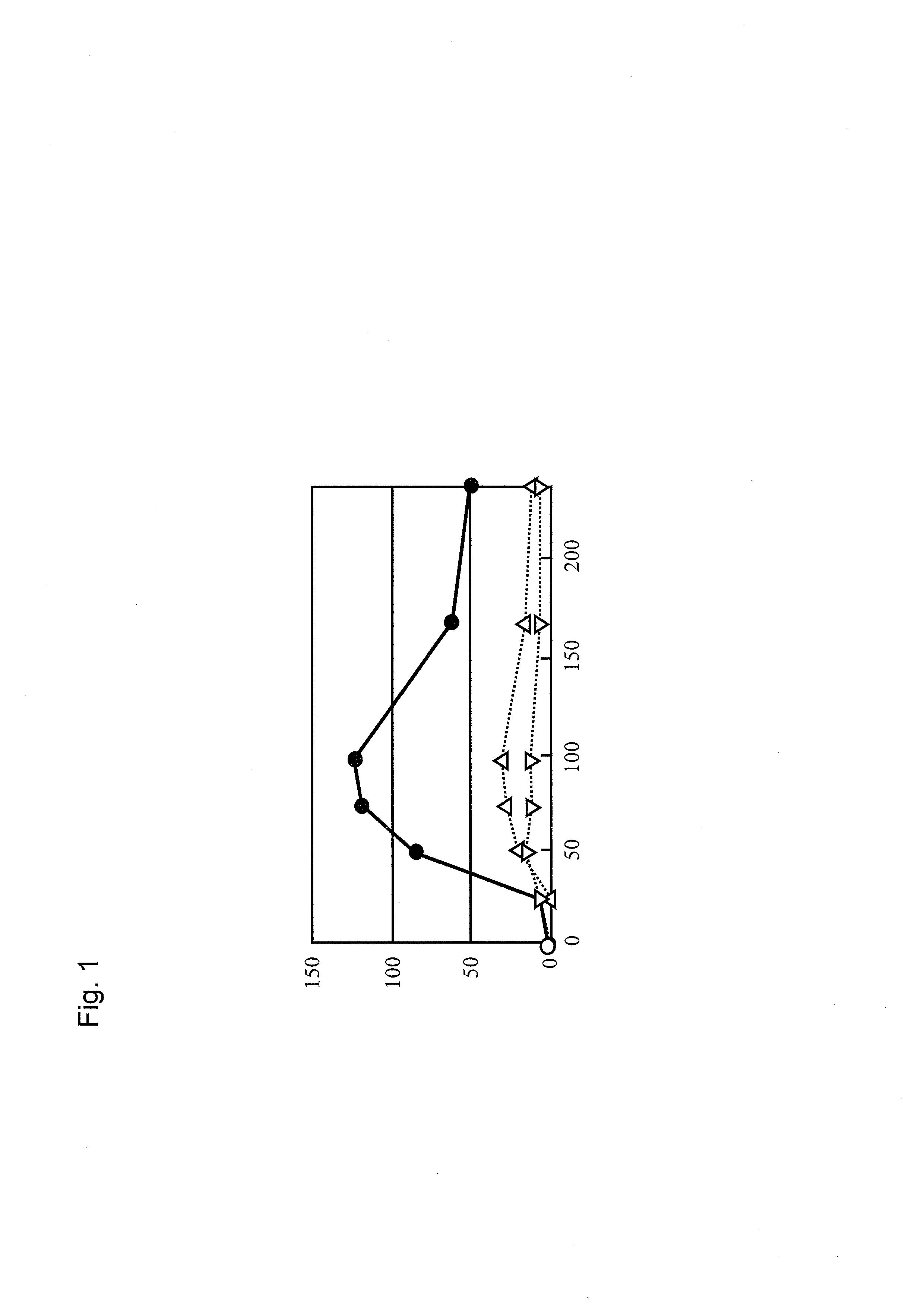Method for producing isopropanol and recombinant yeast capable of producing isopropanol
- Summary
- Abstract
- Description
- Claims
- Application Information
AI Technical Summary
Benefits of technology
Problems solved by technology
Method used
Image
Examples
example 1
[0053]In the example, recombinant yeast was prepared by introducing a Streptomyces sp. CL190 strain-derived ORFn gene or a Saccharomyces-cerevisiae-derived ERG10 gene as an acetoacetyl CoA synthase gene, Clostridium-acetobutylicum-derived ctfA gene and ctfB gene as acetoacetyl CoA transferase gene, a Clostridium-acetobutylicum-derived adc gene as acetoacetic acid decarboxylase, and a Clostridium-beijerinckii-derived pdh gene as an isopropanol dehydrogenase gene, and then examined for its capacity to produce isopropanol.
[0054]In addition, the ORFn gene encodes acetoacetyl CoA synthase having activity of synthesizing acetoacetyl CoA from malonyl CoA and acetyl CoA. The ERG10 gene encodes acetoacetyl CoA synthase having activity of synthesizing acetoacetyl CoA from two molecules of acetyl CoA.
[0055]In the example, first, the ctfA gene, the ctfB gene and the adc gene were introduced into a chromosome using an expression vector (pEXP(Ura)-ADC-CTFA-CTFB) containing these genes, and then r...
reference example 1
[0133]In this reference example, Escherichia coli was used as a host. Specifically, an acetoacetyl CoA synthase gene was further introduced into recombinant Escherichia coli in which an isopropanol-biosynthesis-related gene group associated with a metabolic pathway for synthesis of isopropanol from acetoacetyl CoA had been introduced, so as to prepare the recombinant Escherichia coli, and then isopropanol productivity was evaluated.
[0134]The Clostridium acetobutylicum ATCC (824) strain was anaerobically cultured according to a conventional method in 3 ml of reinforced Clostridium medium (Difco) at 30 degree C. for 2 days. Genomic DNA was prepared from 1.5 ml of the culture solution using a genomic DNA preparation kit (Gentra Puregene Yeast / Bact.kit (QIAGEN)).
[0135]A thiA gene that is a Clostridium-acetobutylicum-derived thiolase gene was cloned as follows. First, PCR was performed using the following primers.
CAC2873-F:(SEQ ID NO: 38)5′-ATG AAA GAA GTT G...
PUM
 Login to View More
Login to View More Abstract
Description
Claims
Application Information
 Login to View More
Login to View More - R&D
- Intellectual Property
- Life Sciences
- Materials
- Tech Scout
- Unparalleled Data Quality
- Higher Quality Content
- 60% Fewer Hallucinations
Browse by: Latest US Patents, China's latest patents, Technical Efficacy Thesaurus, Application Domain, Technology Topic, Popular Technical Reports.
© 2025 PatSnap. All rights reserved.Legal|Privacy policy|Modern Slavery Act Transparency Statement|Sitemap|About US| Contact US: help@patsnap.com

